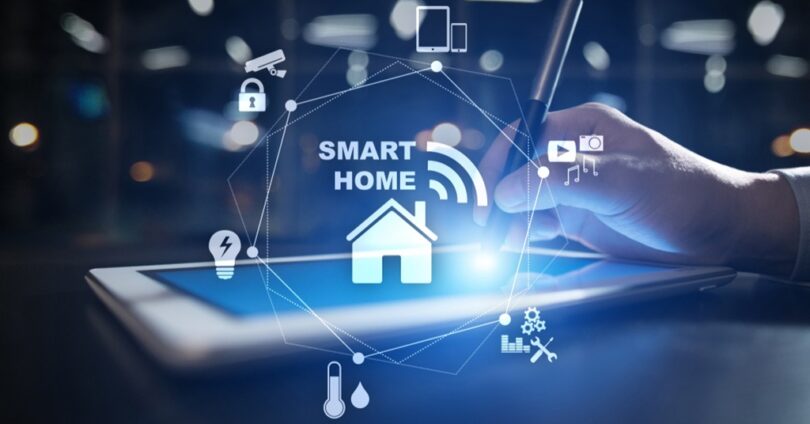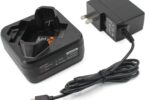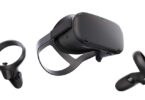With changing times, homes need to be modified as well; hence the development of Smart Home Technology. If you’re wondering “What is a Smart Home?” or “What is Smart Home Technology?”, you’re at the right place. Here we have, a guide to Smart Homes, their origins, and Technology related to it.
What is a Smart Home?

“Smart home: a residence that boasts smart appliances (ovens, refrigerators), lighting systems, and other devices all of which can be controlled from your smartphone or through multiple home touchpoints so far as the operator knows what they’re doing.” For the homeowner, this means controlling your home’s thermostat by adjusting using voice commands, turning lights on or opening blinds automatically, automatically setting a home alarm system and even keeping an eye on security cameras in real-time as needed.
The entire concept is based on information sharing, thanks to the Internet of Things (IoT) ecosystem. Smart homes can provide added convenience, security, and even improved energy efficiency through the use of automation for routine tasks like collecting mail or allowing remote control over the thermostat. While these are significant benefits, there are also privacy and network vulnerability concerns with smart home systems.
What is Smart Home Technology?

Some Smart home Device Manufacturers are:
Samsung: Buy Now
Amazon: Buy Now
Google: Buy Now
If you’re wondering “What is Smart Home Technology?”, here is your answer. Smart home technology allows you to connect your appliances and devices so they can be remotely controlled, automated, and monitored. Let me give you a sneak peek of how it works:
- Communication protocols: Your devices talk to each other (or a central hub) via wireless protocols like Wi-Fi, Zigbee, or Z-Wave.
- Central Hub (optional)—a control center that receives signals from various devices and sends commands back
- Smartphone app, this is the easiest: as already mentioned a smartphone app enables you to control and monitor the smart devices from your home remotely. You can also create a schedule and automation.
- Automation: By creating schedules or utilizing triggers (such as arriving at home), smart home systems are capable of automatically adjusting lights, setting the thermostat temperature, or securing your doors.
First, the ability to make a home more convenient, secure, and energy-friendly is simply unprecedented. Second, smart homes allow us to personalize our living experience like never before.
There might be some Smart Home Devices you know.
Here’s a list of Smart Home Devices that are commonly used to elevate living experiences:
- Smart thermostats: If you work inside a building, then ensure you familiarize your routine and regulate heating/cooling to improve comfort and save on energy. Keep them under control from the comfort of your home and guarantee a warm welcome when you get there.
- Smart lights: You can adjust the brightness and colors with the accompanying phone application, create a schedule for the bulbs to turn on/off automatically, or use the bulbs to perfectly sync with music played in the room.
- Smart doorbells: Get a glimpse of who is at your doorstep through the integrated camera, get notifications of the same on your phone, and respond to the same by using the Intercom.
- Smart locks: Oh no! Let’s leave the keys where they belong – at home. By using this app, you can use your phone to open or close your doors, set up a temporary code for a guest, or be notified when your tenants open the door.
- Smart plugs: Make your regular cookers and fridges smart devices. Some features include controlling power from a distance, setting time for lighting or appliances, and even estimating the utilization of energy.
- Smart speakers and displays: These can act as your smart home, effectively allowing voice control of various devices, playing music, showing feeds from security cameras, and controlling your entire Smart Home.
Why must you have a Smart Home Device?
- Effortless Comfort: Adjust lights, thermostats, and appliances from your phone while gone, or even without anyone being home. It can be as simple as providing the exact temperature you wanted before you got home or designing lights to fade for a movie night.
- Enhanced Security: Sensored doorbells with cameras so you can know who is on the other side of the door even when you are not at home. Smart locks also get rid of the problem of losing keys while providing incoming guests limited access to the house. But it also sends notifications each time a door or a window is opened.
- Boosted Efficiency: Smart thermostats are programmable and can learn the user’s behavior in terms of temperature control to economize the use of energy. Smart plugs are capable of switching off electronics that are in standby mode, therefore eradicating phantom power usage.
- Peace of Mind: Smart cameras enable homeowners to monitor their home from a distance; alerts can be received concerning water damage or a break-in and can have the confidence that the home is keeping a lookout for it.
Why must you not have a Smart Home Device?
- Security Concerns: Smart devices are at a risk of being hacked and taking control of the devices may grant you access to the home or other personal details. One must ensure they have frequent updates on their software and are selecting robust passwords.
- Privacy Issues: Technological devices monitor your behavior and implement practices in daily life. It involves being attentive to the kind of information being gathered and the specific ways it is being safeguarded. Do not sign up for the options that you do not require or can do without, in terms of sharing your personal information.
- Cost and Compatibility: We want to underline that smart home systems can be rather costly, beginning with the price for devices and potentially including monthly fees for services. Conflicts may also occur when using products of different brands which is very discouraging.
- Tech Reliance: It is important to note that smart homes depend mostly on the Internet for their functions. Downtime can affect operation and some features may depend on an active Internet connection to provide their services effectively without which they will not be very useful.
How can you set up a Smart Home?
Smart home technology is enjoyable to use when one is comfortably residing in a smart home. The challenge, however, arises when one is beginning to set up the smart home technology. Here’s a simplified guide to help you on your way
1. Assess Your Needs and Budget:
The next step that has to be taken while planning is to decide which areas of the home the automation should focus on – lights, security, or thermostats.
Choose a hub; there are budget versions of smart home tech – simple plugs – and expensive smart appliances.
2. Start Small and Build Up:
You do not need to redesign the whole house and turn it into another style at one time, this is essential to understand. Start with some basics such as programmable lighting or a smart speaker.
It enables you to feel the outcome, understand how it works, and then expand the number of devices step by step.
3. Choose Your Ecosystem (Optional):
First of all, it should be noted that certain devices are more versatile in certain ecosystems (for example, keyboards are better used with computers from the same manufacturer, home, or office). It is imperative to note that voice assistants are in the market as we speak (e.g., Google Home, Amazon Alexa).
One simplifies setup and control, but this is not necessarily required or the better option for the circumstances. Seek for devices that can connect with other systems with open standards such as Zigbee or Z-Wave to make them more versatile.
4. Select and Purchase Devices:
Search for appropriate devices to work within the chosen ecosystem or for an individual task. Elements such as features, reviews, and prices must be looked at for comparison.
5. Download Apps and Set Up Devices:
Many smart devices have an application that directs you through the process of connecting them. This is often done through the use of the device’s Wi-Fi capability, and therefore associating it with your wireless network.
6. Connect and Control (Optional):
If using a central hub, then just follow the directives provided by the equipment in establishing a connection with smart devices.
Check out the features available in your app and how you can manage devices individually or develop complex automation (e. g. These should include employing natural lights in the house by switching on the Artificial lights at night (turning on lights at sunset).
7. Secure Your Smart Home:
Ensure you set up password protection on your smart devices and consider deploying two-factor authentication.
Ensure the device firmware is updated to help counter security threats.
8. Explore and Enjoy!
Smart home systems are beneficial since they provide customers with several helpful features. Try out the automation, voice controls, and integrations to optimize your use of the platform.
A History of Smart Homes – from X10 to Voice Assistants
From the television series named The Jetsons, smart homes are not a vision of the future anymore. Let’s explore some key milestones:
- 1975: X10 turns the power on. The X10 protocol emerges, offering bare-bones home automation through the transmission of control signals over a home’s electrical wiring. Although X10 pioneered home automation technology, reliability proved to be a problem due to electrical noise and lack of effective two-way data transfer.
- 1984: The unscripted name that will grace the lips of the TV audience and house owners is christened ‘Smart House’. The American Association of Home Builders uses the term “smart house” to show how the technologies infiltrate into homes.
- 2005: Beyond the wires. Insteon arises, where electrical wiring is complemented with wireless signals for a stronger control signal. Other protocols such as Zigbee and Z-Wave also grow popular as they complement the problems of X10.
- 2007: After an amusing but increasingly tiresome chant of Samsung TV’s initial TV advertisements ‘Hello! Samsung,’ Smart TVs emerge onto the stage. Smart TVs make their debut, with their primary features being streaming and access to user-generated content, as well as their role in the development of the smart home market.
- 2011: Apple discovers Nest Labs. Nest Labs introduces the Nest Learning Thermostat as the company forms a new class of connected products – thermostats, smoke alarms, and security cameras. Nest was acquired by Google, which took it as a part of its company in 2015.
- 2012-2014: Smart home platforms; the future is already here. SmartThings, founders can gather over $ 1 million of funding on Kickstarter to build their smart home system, which in the future will be purchased by Samsung. Amazon unveiled the Echo and the Alexa, and subsequently Apple’s HomeKit, which signals the beginning of voice assistants, and smart homes.
- 2016-2018: The use of voice assistants in homes is the new trend. Google Home, Nest, Apple HomePod, and Sonos arrived, and they changed the way users communicate with their smart devices, using nothing but their voices.
- Present Day: Constant evolution. Smart home technology is constantly developing and provides people with more connections, additional solutions, and compatibility with other systems.
- The Future: Human autonomy is in jeopardy as virtual instruments such as language models and virtual assistants seize the day. One of the imposing technologies that could be utilized in a smart home environment is ChatGPT, a language model that can be integrated into the smart devices and virtual assistants and enhance the personalization of the Smart Home. Some companies are already looking at this possibility, for instance; Amazon.








I couldn\’t agree more with you Patrick! Thanks for sharing this brilliant article!
You are welcome Lisa, really appreciate it.
this is a test 🙂
Hey, this is a reply!
Glad I can see smart people writing on this website. Keep up the great work lads!
This was really useful, thanks for sharing.
Yes, yes, yes! Coolness level 100 here…
Here in Meks we really want to create some great things. But we also like long comments to test if everything is fine so everyone else can see it. Well, yes, seems that comments section is working really great!
I LOVE THIS THEME!!! GREAT JOB GUYS!!!
test
But we also like long comments to test if everything is fine so everyone else can see it.
What a great theme. Good job.